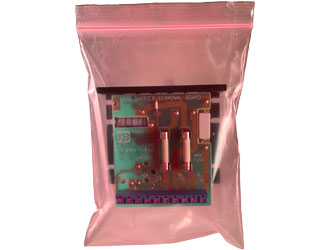to select
to navigate
esc to close
Go Back
Custom Packaging
Bags & Liners
Tubing & Film
Packaging Supplies
Shop by Application

Hi there,
how can we help you today?
Shipping options will change based on location.
Current ZIP Code:
Update zip code
User my current location
Order before 4pm EST for same-day shipping on in-stock items!
Lowest Price Guarantee
30-Day Returns & Exchanges
100% Satisfaction Guarantee


Anti-static bags are the best choice when you need to protect electronic components or devices from electrostatic discharge (ESD) during transport or storage. Here are some situations where anti-static bags would be the best choice:
Overall, anti-static bags are the best choice whenever you need to protect electronic components or devices from electrostatic discharge. They can help prevent damage during transport or storage, and are an essential tool for anyone working with electronic products.
Conductive bags and antistatic bags are different from each other, although both are designed to protect electronic components from electrostatic discharge (ESD).
Antistatic bags are designed to dissipate static charges on their surface and prevent electrostatic charges from building up on the surface of the bag, reducing the risk of ESD. They typically have a surface resistance in the range of 10^9 to 10^12 ohms.
Conductive bags, on the other hand, are made of materials that are designed to provide a low-resistance path for static charges to flow through, effectively grounding the charges and eliminating the risk of ESD. Conductive bags have a surface resistance typically in the range of 10^3 to 10^5 ohms.
The primary difference between the two types of bags is their ability to conduct electricity. While antistatic bags are designed to prevent static buildup on their surface, conductive bags are designed to provide a low-resistance path for static charges to flow through, effectively grounding the charges and preventing ESD.
Conductive bags are typically used for more sensitive electronic components and devices that require a higher level of protection from ESD, such as microchips, circuit boards, and other delicate devices. They are also used in situations where there is a higher risk of ESD, such as in cleanroom environments where there is a high level of static electricity.
Overall, both antistatic bags and conductive bags are important tools for protecting electronic components from ESD, but they are designed for different levels of protection and have different properties. It's important to choose the appropriate type of bag based on the specific needs of the electronic components or devices being transported or stored.




